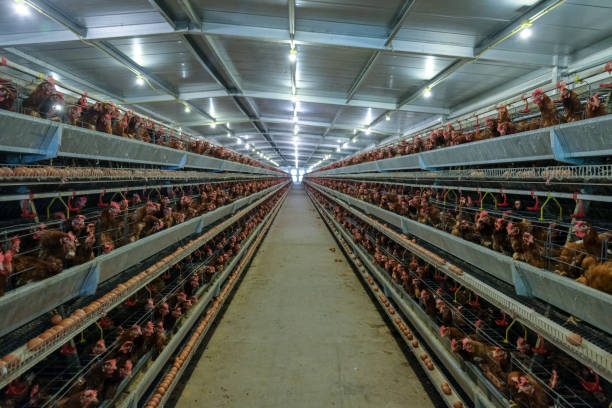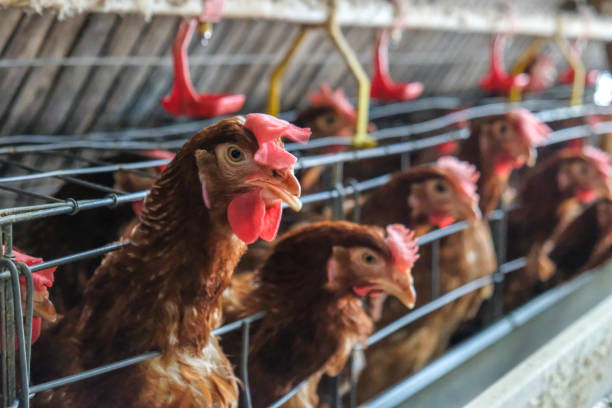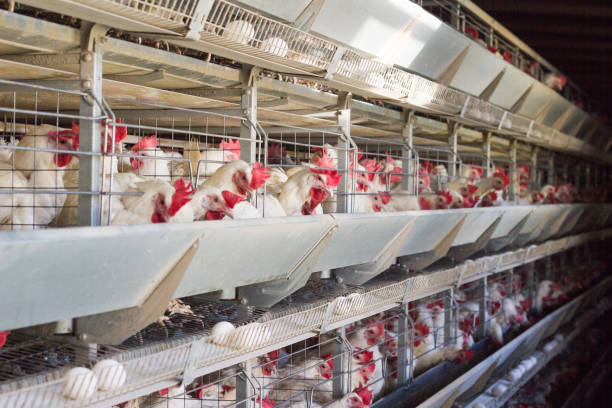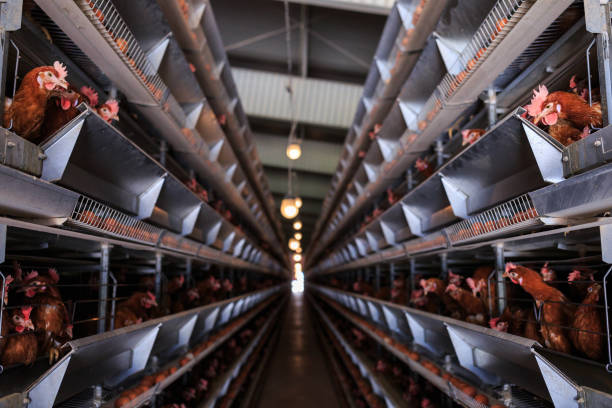
Elevate Your Layer Farming Business Plan in India with Modern Solutions
Elevate Your Layer Farming Business Plan in India with Modern Solutions
India’s poultry sector is experiencing robust growth, driven by increasing demand for eggs and poultry meat. Layer farming, specifically, presents a lucrative opportunity for entrepreneurs. However, succeeding in this dynamic market requires more than just traditional methods. This article dives into how to elevate your layer farming business plan in India by integrating modern solutions, enhancing efficiency, and maximizing profitability.
Understanding the Indian Layer Farming Landscape
Before delving into specifics, let’s paint a picture of the current scene. India is one of the largest egg producers globally, and the industry is characterized by a mix of small-scale, medium-scale, and large-scale farms. Consumer preferences are evolving, with a growing awareness of food safety and quality. This awareness is pushing farmers to adopt modern practices that ensure healthier birds and safer eggs.
The challenge lies in navigating the complexities of the market, including fluctuating feed prices, disease outbreaks, and increasing operational costs. Modern solutions offer the tools to overcome these challenges and build a sustainable and profitable layer farming business.
Crafting a Solid Layer Farming Business Plan
A well-structured business plan is the foundation of any successful venture. For layer farming in India, it’s crucial to consider the following components:

Executive Summary: A concise overview of your business, including your mission, vision, goals, and key strategies.
Market Analysis: A thorough examination of the egg market in your target region, including demand, pricing trends, competitor analysis, and consumer preferences. Understanding the dynamics of the local market is crucial for making informed decisions.
Business Description: Detailing your farming operations, including the scale of your farm, the breed of hens you plan to raise, your production methods, and your target market.
Management Team: Outlining the roles and responsibilities of your management team, including their experience and expertise. A strong and capable team is essential for efficient operations.
Operational Plan: Describing your day-to-day operations, including sourcing chicks, feeding, housing, healthcare, egg collection, processing, and distribution.
Marketing and Sales Strategy: Explaining how you plan to reach your target market and sell your eggs. This includes branding, packaging, pricing, distribution channels, and promotional activities.
Financial Projections: Presenting detailed financial forecasts, including startup costs, operating expenses, revenue projections, profit margins, and cash flow analysis. This section is crucial for attracting investors and securing funding.
Funding Request: If you are seeking funding, clearly state the amount you need, how you plan to use the funds, and your repayment plan.
Adopting Modern Housing Systems: The Cage Advantage
Traditional layer farming often involves deep litter systems, which can be labor-intensive and pose challenges in terms of hygiene and disease control. Modern cage systems, on the other hand, offer several significant advantages:
Improved Hygiene: Cage systems elevate the hens above the floor, preventing contact with manure and reducing the risk of bacterial infections. This leads to healthier birds and cleaner eggs.
Increased Egg Production: Cages provide a controlled environment that optimizes egg production. Factors such as temperature, lighting, and ventilation can be precisely managed to create ideal conditions for laying.
Reduced Labor Costs: Automated feeding, watering, and egg collection systems reduce the need for manual labor, significantly lowering operational costs.
Better Space Utilization: Cage systems allow for a higher stocking density, maximizing the number of hens that can be housed in a given space.
Easier Monitoring: Cages make it easier to monitor individual hens for health issues and identify those that are not performing optimally.
Livi Machinery offers different types of layer cages, including A-type and H-type cages, each with its own set of advantages. A-type cages are a more affordable option for smaller farms, while H-type cages are designed for larger-scale operations and offer a higher degree of automation.
The Role of Technology in Layer Farming
Technology is revolutionizing layer farming in India, providing farmers with the tools to enhance efficiency, reduce costs, and improve overall productivity. Here are some key technological solutions:

Automated Feeding Systems: These systems deliver precise amounts of feed to each cage, minimizing waste and ensuring that each hen receives the nutrition it needs.
Automated Watering Systems: These systems provide a constant supply of fresh, clean water to the hens, promoting hydration and overall health. Nipple drinkers are a popular choice as they minimize water wastage and reduce the risk of contamination.
Automated Egg Collection Systems: These systems automatically collect eggs from the cages, reducing the need for manual labor and minimizing egg breakage.
Climate Control Systems: These systems maintain optimal temperature and humidity levels inside the poultry house, creating a comfortable environment for the hens and promoting egg production. Ventilation systems are crucial for removing stale air and preventing the buildup of harmful gases.
Lighting Systems: Modern lighting systems use LED lights to provide the optimal light spectrum and intensity for egg production. Programmable timers can be used to simulate natural daylight cycles, further enhancing egg production.
Manure Management Systems: Efficient manure management is crucial for maintaining hygiene and reducing environmental impact. Automated manure removal systems can significantly reduce labor costs and improve sanitation.
Data Analytics: Sensors and data loggers can be used to collect data on various parameters, such as temperature, humidity, feed consumption, and egg production. This data can then be analyzed to identify trends, optimize performance, and make informed decisions.
Sustainable Practices for Long-Term Success
Sustainability is becoming increasingly important in the agricultural sector, and layer farming is no exception. Adopting sustainable practices not only benefits the environment but also enhances the long-term viability of your business.
Renewable Energy: Solar panels can be used to generateelectricity for your farm, reducing your reliance on fossil fuels and lowering your energy costs.
Water Conservation: Implementing water-saving measures, such as using drip irrigation and recycling water, can help conserve this precious resource.
Waste Management: Composting manure and using it as fertilizer can reduce waste and improve soil health.
Environmentally Friendly Products: Using environmentally friendly cleaning products and disinfectants can minimize the impact on the environment.
Biosecurity Measures: Protecting Your Investment
Disease outbreaks can be devastating to layer farms, leading to significant economic losses. Implementing strict biosecurity measures is essential for protecting your investment.

Restricting Access: Limiting access to the farm to authorized personnel only can help prevent the introduction of diseases.
Sanitization: Regularly disinfecting the poultry house and equipment can kill harmful pathogens.
Vaccination: Vaccinating your hens against common diseases can provide them with immunity and prevent outbreaks.
Quarantine: Isolating new birds or sick birds can prevent the spread of diseases.
Rodent and Pest Control: Implementing effective rodent and pest control measures can prevent the spread of diseases and protect your feed supply.
Feed Management: Optimizing Nutrition for Egg Production
Feed costs are a significant expense in layer farming, so optimizing feed management is crucial for maximizing profitability.
High-Quality Feed: Providing your hens with a high-quality feed that meets their nutritional requirements is essential for optimal egg production.
Proper Storage: Storing feed properly in a cool, dry place can prevent spoilage and maintain its nutritional value.
Feed Additives: Using feed additives, such as enzymes and probiotics, can improve digestion and nutrient absorption.
Monitoring Feed Consumption: Monitoring feed consumption can help you identify potential problems, such as disease outbreaks or feed deficiencies.
Marketing and Sales Strategies for the Indian Market
Effectively marketing and selling your eggs is essential for generating revenue and building a sustainable business.
Branding: Creating a strong brand identity can help you differentiate your eggs from the competition.
Packaging: Using attractive and informative packaging can improve the appeal of your eggs to consumers.
Pricing: Setting a competitive price that reflects the quality of your eggs is essential for attracting customers.
Distribution Channels: Utilizing a variety of distribution channels, such as wholesalers, retailers, and direct sales, can help you reach a wider market.
Online Marketing: Using social media and online advertising can help you reach potential customers and build brand awareness.
Navigating Regulatory Requirements in India
Layer farming in India is subject to various regulatory requirements, including licenses, permits, and standards. It’s crucial to understand and comply with these regulations to avoid penalties and ensure the smooth operation of your business.
Registration: Registering your farm with the appropriate authorities is a legal requirement.
Environmental Regulations: Complying with environmental regulations is essential for protecting the environment and obtaining the necessary permits.
Food Safety Standards: Adhering to food safety standards is crucial for ensuring the quality and safety of your eggs.
Embracing Innovation for Future Growth
The layer farming industry is constantly evolving, so it’s essential to embrace innovation to stay ahead of the curve.
Research and Development: Investing in research and development can help you identify new technologies and practices that can improve your farm’s performance.
Collaboration: Collaborating with other farmers, researchers, and industry experts can help you stay informed about the latest trends and best practices.
Continuous Improvement: Continuously evaluating your farm’s performance and making improvements can help you optimize efficiency and maximize profitability.
By embracing modern solutions, adopting sustainable practices, and staying informed about the latest trends, you can elevate your layer farming business plan in India and achieve long-term success. The key is to approach your business with a strategic mindset, a commitment to quality, and a willingness to adapt to the ever-changing market conditions. Partnering with reliable equipment suppliers like Livi Machinery can provide you with the tools and expertise you need to build a thriving layer farming operation. Good luck!
